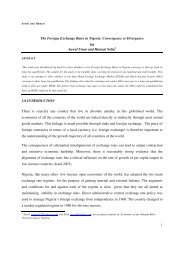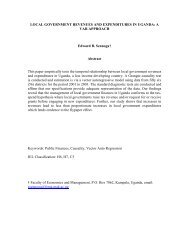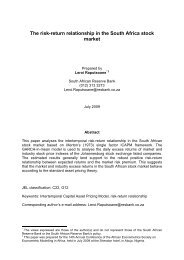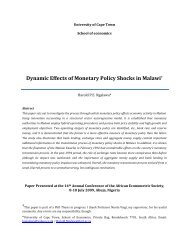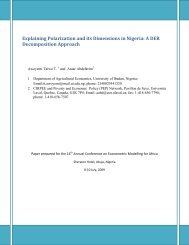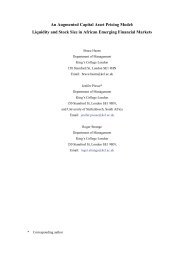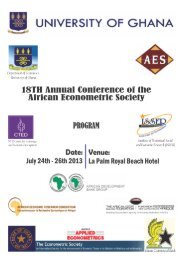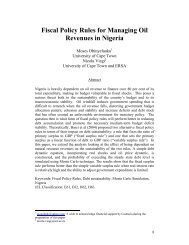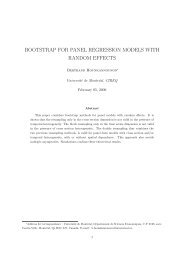a gravity model approach - African Econometric Society
a gravity model approach - African Econometric Society
a gravity model approach - African Econometric Society
You also want an ePaper? Increase the reach of your titles
YUMPU automatically turns print PDFs into web optimized ePapers that Google loves.
whereα ij represents individual effects, SADC is the dummy variable taking the value ofone if the country is a member of SADC and zero otherwise, and EU is the dummyvariable for countries that are part of the European Union and takes the value of one ifpart of EU or zero otherwise. BORDER is a dummy variable for countries that shareborders with Namibia. It also takes the value of one and zero otherwise. According toCarrère (2006) membership of regional groupings can generate a significant increase intrade. The coefficient of the real exchange rate is expected to be negative, implying thatan appreciation of the real exchange rate discourages exports, while those of dummyvariables are expected to be positive. Regional trade agreements and sharing a commonborder promote exports between countries.3. Estimation ProcedureThere are three <strong>model</strong>s that can be estimated in panel data estimation. These <strong>model</strong>s are pooled, fixedeffects and random effects. Since individual effects are included in the regressions a decision shouldbe made whether they are treated as random or fixed. A random effects <strong>model</strong> can be moreappropriate when estimating the flows of trade between a randomly drawn sample of trading partnersfrom a large population. A fixed effects <strong>model</strong> would be a better <strong>model</strong> when estimating the flows oftrade between an ex ante predetermined selection of countries (see Egger, 2000; Eita and Jordaan,2007). Since this study deals with the flows of trade between Namibia and its 38 main tradingpartners, the fixed effect will be a more appropriate <strong>model</strong> than the random effect specification. Thetop 38 trading partners were selected based on trade statistics for the period 1998 to 2006.Furthermore, the study also applies the Hausman test to check whether the fixed effects <strong>model</strong> is moreefficient than the random effects <strong>model</strong>. This will be true if the null hypothesis of no correlationbetween the individual effects and the regressors is rejected.



